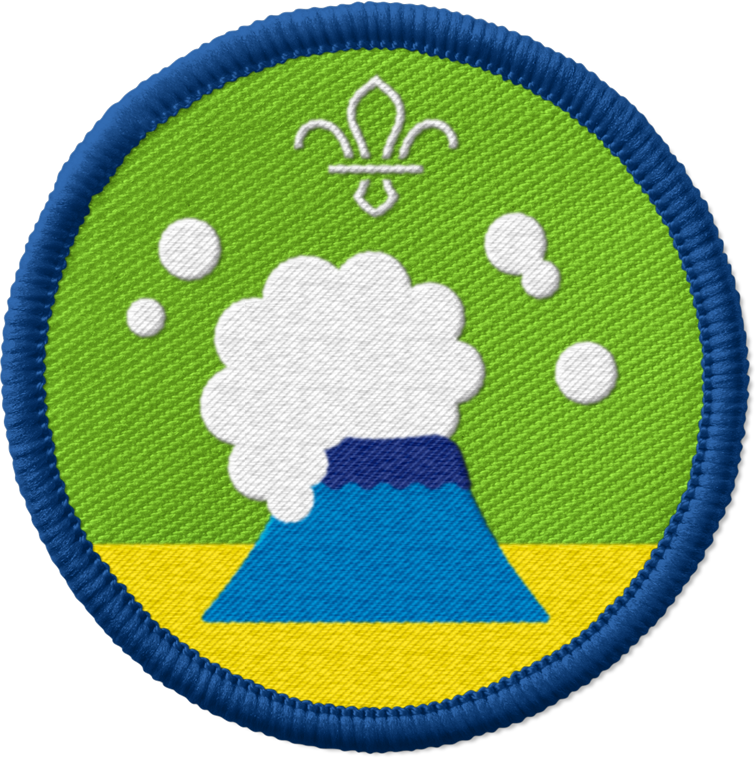Play What's In The Box?
You’ll need
- Scissors
- Small cardboard boxes or square tissue boxes
- A mixture of items with interesting textures
- Plates or bowls if needed
- Fabric or kitchen roll (optional)
- Stapler and staples, or strong tape (optional)
- Scrap paper (optional)
- Pens and pencils (optional)
- Blindfolds or Scout scarves (optional)
Before you begin
- Use the safety checklist to help you plan and risk assess your activity. There's also more guidance to help you carry out your risk assessment, including examples.
- Make sure all young people and adults involved in the activity know how to take part safely.
- Make sure you’ll have enough adult helpers. You may need some parents and carers to help.
Planning and setting up this activity
- This What’s In The Box? game can be played a party or an event, such as Halloween, Christmas, Easter or Hanukkah - just adjust the items in the box to match the celebration.
- You can also play this game throughout the year. You’ll need to use safe natural or household objects or items for people to guess, such as teddies, jelly, acorns or a TV remote.
- Remember to check for allergies and adjust the items as needed. Check if there are any items of food (or packaging) that people can’t touch or be near to, or if there are items that people might not be comfortable using in the activity.
Making the boxes
- You might want to make, prepare and set up the mystery boxes before the session, so no one gets a peek at the mystery items.
- Cut a hole in one side of a small box, such as shoeboxes. Make sure it’s big enough for a hand to go through, but not too big that people can see in. You could use square tissue boxes, which have a handy hole already in. You could also use bags for people to delve into.
- Attach some material over the hole to stop people seeing, but make sure it’s lightweight enough that it moves for people to put their hand in. Kitchen roll, tissue or newspaper works well. You could attach it using staples or strong tape. If you’re stapling, make sure you don’t end up with any sharp bits that people could scrape their hands on.
- To take your boxes to an extra level, you could decorate them or wrap for the event, such as in a themed wrapping paper.
- Place the mystery items inside the boxes. For any damp items, you’ll probably want to pop these on a plate or in a bowl, or in a plastic bag, so you don’t end up with a soggy box. You should wait until right before the activity to put any food items in the boxes. You don’t want them sitting out for a long time and growing bacteria.
- Remember to number or code each box, so people can easily write down guesses and you can remember what’s inside each one.
- You may want to put tissues or wipes next to any of the messier boxes, so people can wipe off anything discreetly and not give the answers away.
Running this activity
- Arrange the mystery boxes across tables and make sure they’re well spaced apart.
- Gather everyone together and explain people need to guess what’s in each box.
- Tell everyone at the start that everything is safe to touch, and the boxes only contain things you’d find round a home. There’s nothing spooky, scary, or anything that’ll jump out or grab them.
- Explain that people should put their hand inside each box to feel what’s inside.
- After around thirty seconds, they should guess what the item inside the box is by quietly writing down the box number and their guess. Remind everyone not to show or share their answer with anyone else.
- After they’ve guessed one box, they can move onto another box, until they’ve tried them all. Remind people to wash or wipe their hands between the boxes if they need to.
- For Halloween, the items might represent different things, such as spaghetti representing worms, so they should think about what the item feels like, what they think it represents and what they think it really is.
- Once everyone’s had a go, gather everyone together and ask people to read out their guesses. Did anyone guess the same?
- Now, reveal the answers. Did anyone manage to guess them all correctly?
You should try to choose items with a range of different interesting textures and for lots of senses, such as touch and smell. You can adapt to what you think will work best for your group.
Make sure you check for any allergies, sensory issues, and fears or phobias. Be mindful to select objects around this.
Here are some ideas for your mystery box:
- Cold baked beans
- A cuddly toy
- A hairbrush
- Toy action figures
- Popcorn
- A Rubix cube
- Washing up gloves
- A toothbrush
- An acorn
- Fuzzy pipe cleaners
- Jelly
- Whisk
- Fork
- Ice cube tray
- Paperclips
- Feathers
- Watch
- Remote control
- Plastic cookie cutter
- Jigsaw puzzle piece
- Large crayon
- Toy car
- Foam alphabet letter
- Playdough
- Socks (cleaned and rolled)
- Bean bag
- Rubber duck
- Banana
- Cotton wool balls
- Shaving foam
- Uncooked rice
- Loofah
- Silicone baking mould
- Metal washing up sponge
For Halloween:
- Cooled, cooked spaghetti (for worms)
- Peeled grapes (for eyeballs)
- Thread or string and toy spiders (for spiders webs)
- Plastic bat
- Toy skeleton
- Toy spiders
- Fake eyeballs
Reflection
This activity was all about trying new things and possibly stepping out of your comfort zone whilst having fun. Was there any part of the activity that people found scary or any items they didn’t like feeling? Why do you think different people find different things scary, and have different reactions to different textures? Some people might have needed some encouragement to put their hands in the boxes. Did you help anyone that might have been worried? How did you help them?
Safety
All activities must be safely managed. You must complete a thorough risk assessment and take appropriate steps to reduce risk. Use the safety checklist to help you plan and risk assess your activity. Always get approval for the activity, and have suitable supervision and an InTouch process.
- Scissors
Supervise young people appropriately when they’re using scissors. Store all sharp objects securely, out of the reach of young people.
- Craft: Unusual substances
Supervise young people appropriately when they’re using unusual substances, such as powdered paint, ash or dirt. Be aware of any medical conditions that could be affected by what’s being used. Make sure you follow all relevant safety guidance or manufacturers guidelines, where available. Make sure you dispose of it appropriately too, in line with safety guidance.
- Food
Remember to check for allergies, eating problems, fasting or dietary requirements and adjust the recipe as needed. Make sure you’ve suitable areas for storing and preparing food and avoid cross contamination of different foods. Take a look at our guidance on food safety and hygiene.
- To make this activity easier, you could give people three options of what’s in each box.
- To make this activity harder, you could put more than one object in each box.
- Make sure everyone’s comfortable to put their hand in the boxes. They don’t have to if they don’t want to. This may be a little scary for some people, so they could work in pairs with one person putting the hand in the box and describing it, and one person noting down their guesses.
- Make sure you check for any allergies, sensory issues, and fears or phobias. Be mindful to select objects around this.
- The decision of whether a Scout section should run a Halloween-themed meeting is left to the local volunteers to decide. We realise that Halloween can raise issues for some people or venues, however we also recognise that it's a tradition that lots of young people are used to celebrating. Therefore, we think that only the local volunteers can judge what is most suitable for people in their group.
All Scout activities should be inclusive and accessible.

